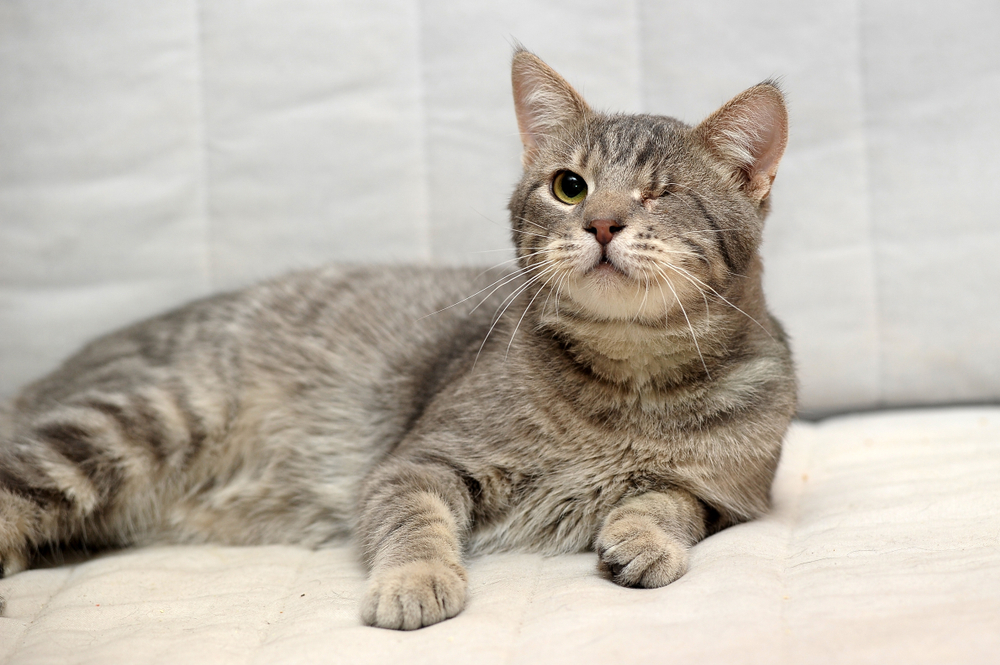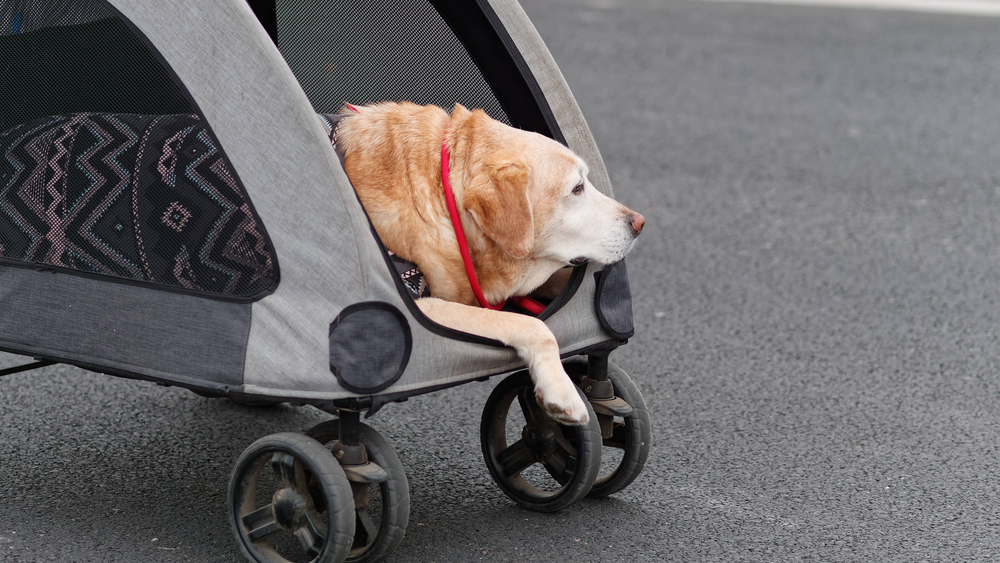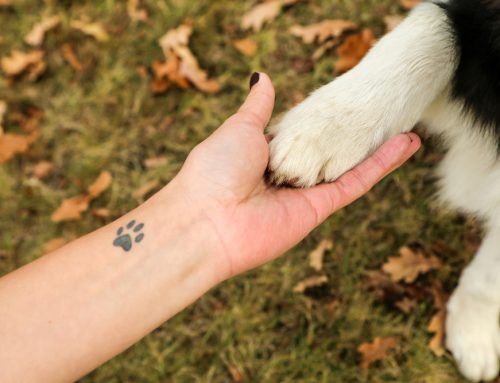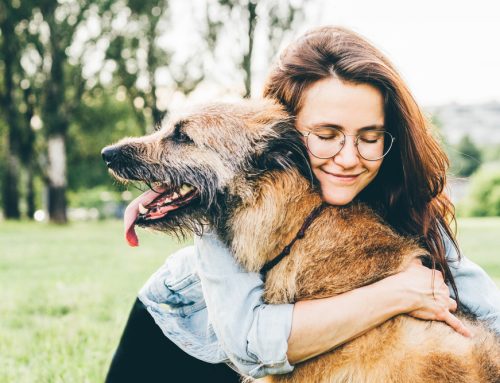Pets with special needs hold a cherished place in our hearts. These dogs and cats face daily challenges with an inspiring amount of determination and resilience. Whether your pet’s mobility or sensory loss was sudden or progressed over time, when you provide them physical and emotional support, you can ensure they enjoy a rich and fulfilling life—without limits. Help your specially-abled pet live their best life by following our Fond Farewell team’s tips.
#1: Find ways to ensure your pet maintains some independence
Sure, your pet may drink from the toilet or sniff another pet’s hind end, but, generally speaking, they maintain a certain level of personal dignity—and physical independence is extremely important. Mobility represents an animal’s survival and freedom, and when they lose this ability, they may demonstrate depression and frustration.
Consider your pet’s needs, and explore opportunities to encourage and support their independence. By helping your pet learn an alternative approach to—or use a medical aid to perform—an activity of daily living that now challenges them, you can help boost their confidence and optimism—in turn, promoting their overall health. Depending on your pet’s particular needs, medical aids and alternative approaches may include:
- Wheelchairs — Mobility carts—pet wheelchairs—can restore paralyzed or weak pets’ mobility. In addition, pets with arthritis may find that a mobility cart restores their enjoyment of usual activities.
- Mobility devices — Modified slings and harnesses allow you to provide support when your pet needs help or while changing positions, such as rising from a reclining position, posturing to eliminate, or using stairs.
- Traction — Slick floors pose a danger to senior pets or those with mobility challenges. Help your pet feel sure-footed by using rug runners, yoga mats, or paw traction products (e.g., PawFriction, Dr. Buzby’s ToeGrips).
- Sensory cues — Vision-impaired pets depend on their other senses to determine their location or proximity to an object or hazard. Place mats with various textures (e.g., reed rugs, grooved rubber mats, textured tape) to signal your home’s elevation changes such as thresholds or stairs. Select a pet-safe scent—some essential oils are highly toxic—to diffuse in each room to help your pet differentiate among their favorite areas.
- New routes — Ensure your pet has easy access to their favorite and essential spaces. Create direct paths by moving furniture, realigning non-slip rugs, or widening spaces to accommodate your pet’s wheelchair. By ensuring your pet can access essential and favorite home areas, you help them stay engaged and continue feeling they are part of the family.

#2: Support your pet’s body balance with manual therapies
Specially-abled pets may experience unique physical challenges. For example, tripod pets (i.e., those who have lost limbs) have an altered center of gravity. Pets with paralysis or weakness overuse their working limbs, developing muscle tightness. Pets with severe arthritis often tense their muscles to protect their painful joints. Manual therapies can release tension, correct imbalance, promote joint and spinal health, and improve your pet’s comfort and mobility. These services include:
- Massage — Soft tissue massage improves specially-abled pets’ circulation, eases pain and discomfort, and provides unique positive sensory input.
- Chiropractic — Chiropractic care can realign joints, including the spine, and is beneficial to pets who have musculoskeletal or neurologic conditions.
- Acupuncture — Acupuncture stimulates specific points on your pet’s nerve pathways to enhance circulation, reduce pain and inflammation, and promote relaxation.
Ensure any therapy will be beneficial to your pet by talking with your primary veterinarian before starting.
#3: Engage your pet with enrichment activities
If your pet cannot see the world, you can bring the world to them through enrichment—the practice of introducing novel challenges to your furry pal’s environment, allowing them to experience instinctive behavior. Enrichment activities generally provide a sensory experience, including new textures, aromas, flavors, visual stimuli, or sounds.
Foraging toys, such as snuffle mats and lickable treat mats, are perfect for pets with weakness or reduced mobility. Select your pet’s toys based on their strengths (e.g., whether they can use their nose or paw to manipulate a puzzle) and start with simple challenges. Help your pet when necessary to ensure success, and build their confidence. Some additional enrichment items and approaches include:
- Nose work games
- Pet activity mats
- Do-it-yourself busy boxes
- Introducing pet-safe novel foods
- Placing new items in your pet’s area for them to investigate (e.g., leaves, large sticks, cardboard boxes, empty milk jugs)
- Play with prey toys (e.g., feather wand or laser pointer for cats, flirt pole for dogs), and keep the motions slow, safe, and within your pet’s ability. Challenge your pet, but let them win.
Supervise your pet during enrichment activities to ensure their safety. To prevent injury and boredom, put away all novel objects and toys after an enrichment session.
#4: Provide beneficial strength-building exercises for your special pet
Specially-abled pets may not have their able-bodied friends’ grace and athleticism, but your special pal still needs and deserves regular exercise. To be beneficial, physical activity does not have to be high intensity. Low-impact exercises, such as those veterinary rehabilitation specialists offer, can achieve the same endorphin-releasing, muscle-building, and coordination-enhancing advantages—with no injury risk.
Ask your pet’s veterinarian or a veterinary rehabilitation specialist about exercises appropriate for your pet. These activities may include simple weight shifting on the ground, balance exercises on an inflatable disc, or more advanced strength training such as puppy push-ups and kitty crunches (i.e., sit to stand exercises).
Your pet does not let their disability limit their life, and neither should you. Consider your specially-abled pet’s daily routine to determine how to add comfort, joy, and novelty to their world. When your pet is ready to say goodbye, our Fond Farewell team is here to help you provide them with an equally comfortable and life-honoring passing. Contact us to discuss our care options or to schedule an appointment.















Leave A Comment